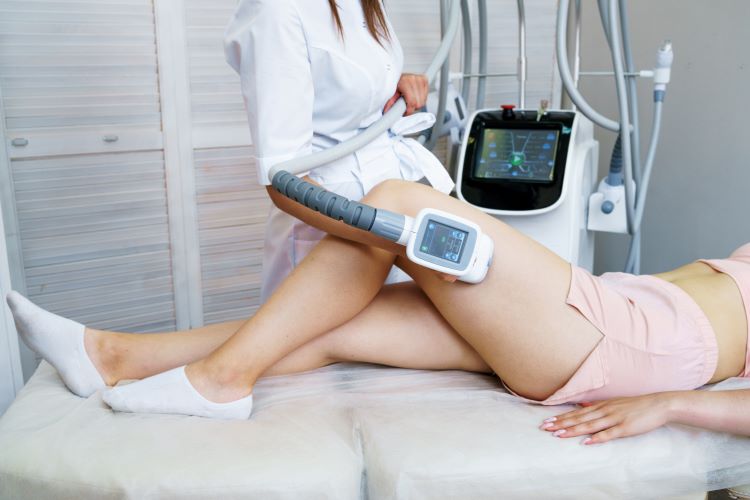Pricing Guide for Non-Invasive Belly Treatments
Non-invasive belly treatments have gained significant popularity in Saudi Arabia as individuals seek effective alternatives to surgical procedures for reducing abdominal fat. These advanced treatments offer the promise of body contouring without the need for incisions, anesthesia, or lengthy recovery periods. Understanding the various options available, their effectiveness, and associated costs is essential for anyone considering these procedures. This comprehensive guide explores the landscape of non-surgical abdominal fat removal, providing insights into what these treatments entail, how they work, and what you can expect in terms of pricing and results.

Modern advancements in aesthetic medicine have introduced numerous non-invasive options for individuals looking to reduce stubborn belly fat. These treatments utilize various technologies to target fat cells without requiring surgical intervention, making them attractive alternatives for those seeking body contouring solutions with minimal downtime.
What Is Non-Surgical Abdominal Fat Removal?
Non-surgical abdominal fat removal encompasses a range of procedures designed to reduce fat deposits in the belly area without invasive surgery. These treatments typically employ technologies such as cryolipolysis (fat freezing), radiofrequency energy, ultrasound waves, or laser therapy to break down or eliminate fat cells. Unlike traditional liposuction, these procedures do not require incisions or general anesthesia. Common non-invasive treatments include cryolipolysis devices that freeze fat cells, ultrasound cavitation that uses sound waves to disrupt fat cell membranes, radiofrequency treatments that heat and destroy fat cells, and laser-based therapies that liquefy fat deposits. Each method works differently but shares the common goal of reducing localized fat deposits through non-surgical means. Results typically appear gradually over several weeks to months as the body naturally processes and eliminates the treated fat cells.
Understanding the Costs of Non-Surgical Belly Fat Removal
The financial investment required for non-invasive belly treatments varies considerably based on several factors. Treatment costs in Saudi Arabia depend on the specific technology used, the number of sessions required, the treatment area size, the clinic’s location and reputation, and the expertise of the practitioner performing the procedure. Geographic location within the country can influence pricing, with facilities in major cities potentially charging different rates than those in smaller urban areas. The extent of fat reduction desired also plays a role, as some individuals may achieve their goals with a single session while others require multiple treatments for optimal results. Clinic overhead costs, equipment quality, and practitioner qualifications all contribute to the final price structure.
| Treatment Type | Provider/Technology | Cost Estimation (SAR) |
|---|---|---|
| Cryolipolysis (Fat Freezing) | Specialized Aesthetic Clinics | 1,500 - 4,000 per session |
| Ultrasound Cavitation | Medical Spas & Clinics | 800 - 2,500 per session |
| Radiofrequency Treatment | Dermatology Centers | 1,200 - 3,500 per session |
| Laser Lipolysis | Advanced Aesthetic Centers | 2,000 - 5,000 per session |
| Combination Treatments | Premium Medical Facilities | 3,000 - 7,000 per session |
Prices, rates, or cost estimates mentioned in this article are based on the latest available information but may change over time. Independent research is advised before making financial decisions.
Guide for Non-Surgical Abdominal Fat Removal
Selecting the appropriate non-invasive treatment requires careful consideration of multiple factors. Begin by consulting with qualified practitioners who can assess your specific situation and recommend suitable options based on your body composition, fat distribution, and aesthetic goals. Research the credentials and experience of providers in your area, ensuring they have proper training and certification in the technologies they offer. Understanding realistic expectations is crucial, as non-surgical treatments typically produce more subtle results compared to surgical procedures and may require multiple sessions for noticeable improvement. Most individuals see gradual changes over two to three months following treatment as the body naturally eliminates destroyed fat cells. Maintenance of results depends largely on lifestyle factors, including diet and exercise habits. Consider scheduling consultations with multiple providers to compare treatment approaches, pricing structures, and facility standards before making a decision.
Factors Affecting Treatment Effectiveness
Several elements influence the success of non-invasive belly treatments. Individual body composition plays a significant role, as these procedures work best for individuals at or near their ideal weight with localized fat deposits rather than those with significant overall weight concerns. Skin elasticity affects the final appearance after fat reduction, with younger, more elastic skin typically responding better to treatment. The specific technology used and the skill of the practitioner administering the treatment are critical factors in achieving desired outcomes. Adherence to post-treatment care instructions, including staying hydrated, maintaining physical activity, and following dietary recommendations, can enhance results. Some individuals may be better candidates for certain technologies based on their unique physiology and fat distribution patterns.
Safety Considerations and Side Effects
Non-invasive treatments are generally considered safe when performed by qualified professionals using approved equipment. Common temporary side effects may include redness, swelling, bruising, numbness, or tingling in the treated area, typically resolving within days to weeks. Serious complications are rare but can occur, making it essential to choose reputable providers who follow proper protocols and safety standards. Individuals with certain medical conditions, including cryoglobulinemia, cold agglutinin disease, or paroxysmal cold hemoglobinuria, may not be suitable candidates for cryolipolysis treatments. Pregnant or breastfeeding women should postpone these procedures. A thorough medical evaluation before treatment helps identify any contraindications and ensures patient safety.
Comparing Results with Traditional Methods
While non-invasive treatments offer convenience and minimal downtime, understanding how they compare to surgical options helps set appropriate expectations. Traditional liposuction typically produces more dramatic and immediate results but requires anesthesia, incisions, and recovery time. Non-surgical alternatives provide gradual improvement with virtually no downtime, making them suitable for individuals seeking modest fat reduction without surgical risks. The choice between invasive and non-invasive approaches depends on individual goals, tolerance for downtime, budget considerations, and medical suitability. Some individuals may benefit from combining non-invasive treatments with healthy lifestyle modifications for optimal long-term results.
Non-invasive belly treatments represent a viable option for individuals seeking fat reduction without surgery. By understanding the available technologies, realistic cost expectations, and factors influencing treatment success, you can make informed decisions aligned with your aesthetic goals and financial considerations. Thorough research, consultation with qualified practitioners, and realistic expectations are key to achieving satisfactory outcomes with these innovative procedures.




